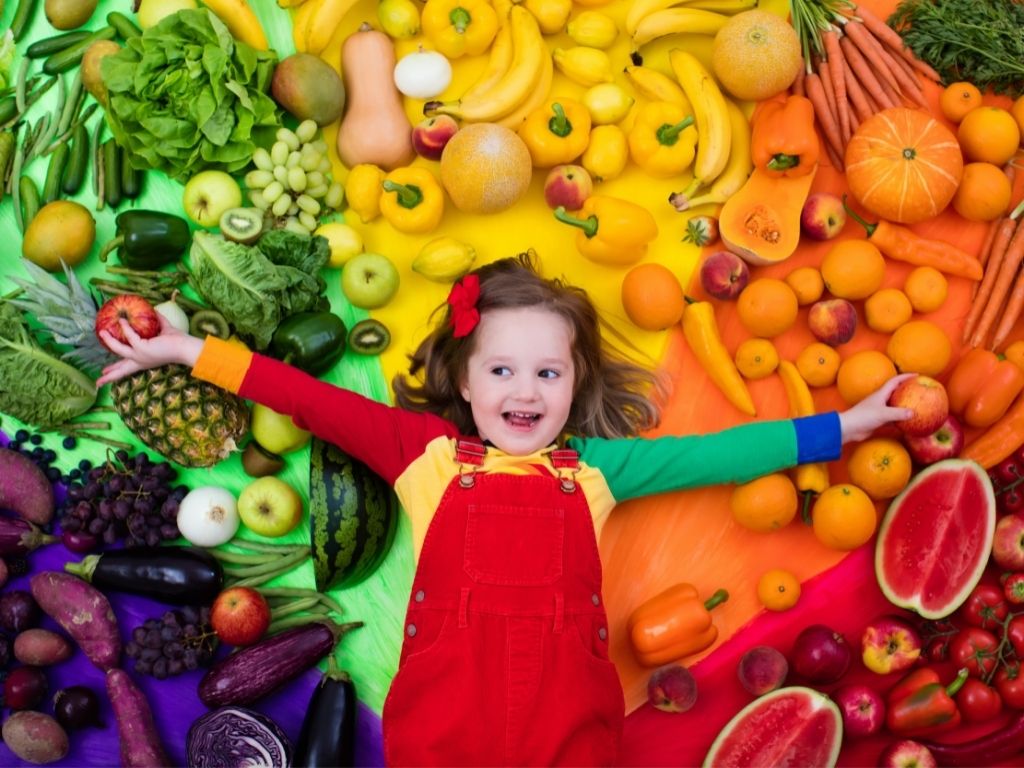by doddl expert partner Lucy Upton (The Children's Dietitian)
One of parent’s biggest worries about children’s eating is whether they are ‘getting enough’ toddler nutrients. There is no one-step solution to simply checking if this is the case. But here are some easy ways to think about your child’s intake from Specialist Pediatric Dietitian, Lucy Upton.1. Do they include foods from all the key food groups?
The reason we recommend certain portions of foods from certain food groups is to include the range of nutrients little ones need for growth and development! Toddlers should aim for roughly (each day):
- 5 portions* of starchy carbohydrate foods
- 5 portion* of fruits/vegetables
- 2-3 portions* of dairy or fortified alternatives
- 2-3 portions* of protein rich foods
- Include sources of fat (important for growth) *Remember these are toddler size portions
2. Do you offer variety with color of foods, especially fruits and vegetables?
Eating the rainbow and including a range of different colors of foods, especially fruit and vegetables. This means you’re offering different vitamins, minerals and antioxidants!
3. Do they take an appropriate vitamin supplement?
In the UK it’s recommended that children between 1-5 years have a supplement containing Vitamins A, C & D daily.
4. If they cannot eat certain foods, are they offered alternatives?
For some children, certain foods may be off the menu due to allergies, intolerance or just dietary choice. If this is the case, are you familiar with alternative foods which will offer the same nutrients as those within excluded foods? For example – children who are milk free will need alternative sources of calcium and iodine in their diet. If you’re not sure, seek support from a Dietitian.
5. Are they growing?
Growth is a fantastic way to reassure you that a child is taking in the required amounts of certain nutrients they need, like energy and protein. If you have any concerns about growth, please seek support from a pediatrician/health professional.
6. Do you let their appetite lead?
Children are actually fantastic at regulating their appetite, and letting us into what their body needs day to day. As long as we are offering balanced meals, letting them eat to their appetite and listen to their body.
7. Do you offer variety across food groups?
It's super easy to get stuck in a cycle of offering the same foods. Either because you know your child will accept these easily, or because of the stress of meal planning each week. Offering variety across each food group day to day will help ensure variety with nutrients offered too, and all-important dietary diversity. This can be as easy as switching normal pasta for pea or lentil pasta. Or picking a different vegetable to add to your weekly shop each week.
'Toddler Nutrients - How do I know if my child is getting the nutrients they need?' is just one of our blogs written by our expert partners. To read more from Lucy and our other experts, please check out our Tips and Advice blogs.
We believe that through our award-winning products, we can help unleash the independence in every child. For example, our children's plate is suitable for children 18+ months, and helps young children transition to a 'grown up' plate, the next step in developing mealtime skills! The gentle curve towards the back helps keep food on the plate with a lower front and sides that allows easy access for food with cutlery. The non-slip base keeps the plate still and the colorful splat focuses the eye on to the center of the plate.



